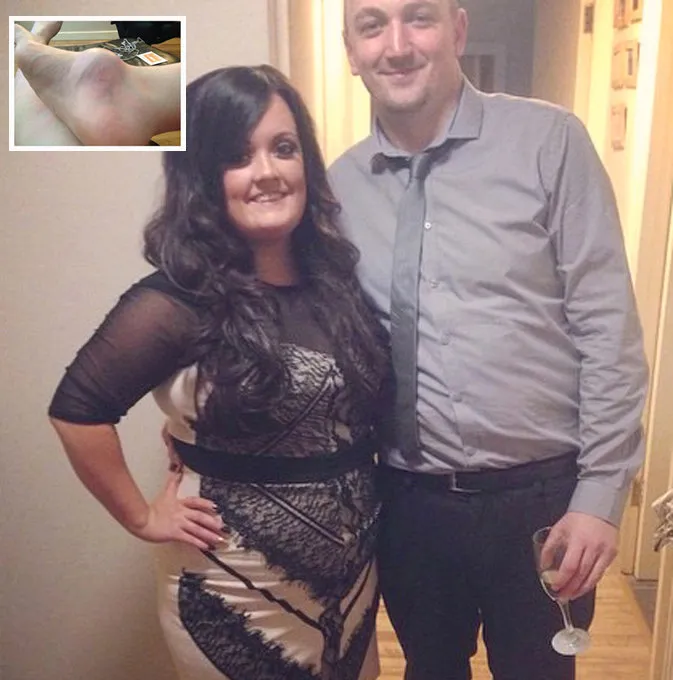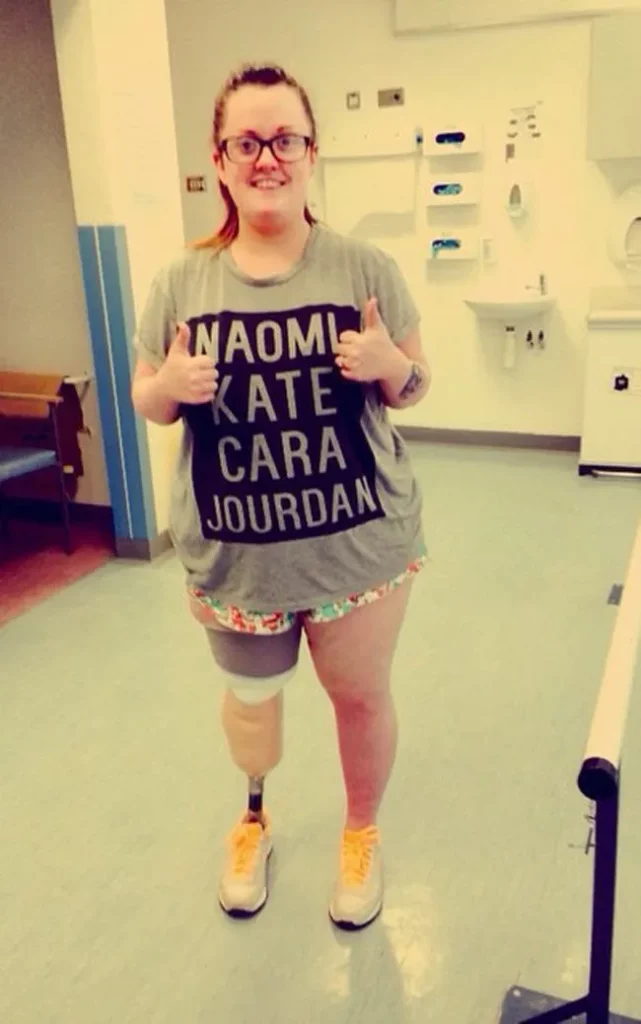For ten years of her life, Cheryl Murray suffered from a painful, enlarging lump on her foot. She kept it from her lover for two years out of humiliation. The bulge, which was now the size of a golf ball, could no longer be hidden after they moved in together. He suggested that she have it examined just in time as well.
The lump turned out to be cancer. When Murray was only 15 years old, she first became aware of the uncomfortable lump developing on her foot. She saw her doctor, who recommended physiotherapy for her.
After a slip and fall, they speculated that she had torn a ligament. But that lump grew much more during the following ten years. When something bumped it, it expanded until it was the size of a golf ball and caused her severe pain.

She then started dating David, who is now her husband. She concealed it from him because she was ashamed of it. She didn’t realize she could no longer maintain the façade until they moved in together. He advised that perhaps she return to the doctor for an explanation after she showed him the bump.
“David asked me what was wrong with my foot. I replied that it was torn ligaments, but he could tell it wasn’t, that it was more serious,” she recalled
The Day Everything Changed.
Murray saw her doctor, who prescribed an MRI scan, biopsies, and X-ray. The results were then explained to her by a surgeon, who shared with her two pieces of bad news that anyone ever likes to hear: She had cancer, specifically a sarcoma. To stop the cancer from spreading, they would need to amputate her lower leg as soon as possible.
“I was hysterical. I was so stunned I couldn’t speak,” Murray said. “I felt like I had been punched in the face twice on one day.”
David, who she was dating, was by her side the entire time. Just a few weeks prior to her amputation, he even proposed to her. According to Murray, she attributes her success in surviving the situation to him. He provided her motivation and the willpower to continue.
A uncommon type of cancer that affects soft tissue, such as muscles, tendons, and fat, is a sarcoma of the connective tissue. Additionally, it may have an impact on the body’s neurons, blood vessels, bones, cartilage, and other tissues.
Tumors called sarcomas arise from cells in the connective tissue that surrounds bones, muscles, and other connective tissues. Their locations and outward appearances are different from one another. Although sarcomas can develop anywhere on the body, they usually start in the arms or legs.
What Causes Sarcomas?
Although the precise origin of these malignancies is unknown, adults experience them more frequently than children. Additionally, they are more likely to develop in persons who have had chemotherapy or radiation treatment for other cancers.
Osteosarcoma (bone cancer), chondrosarcoma (cartilage cancer), and Ewing’s sarcoma (cancer that starts in the bone marrow) are the three most prevalent kinds of bone sarcomas. When these tumors are discovered, the majority of patients are between the ages of 15 and 30. Osteosarcoma is more common in adults than in children, and its risk rises with age.
What Are The Symptoms?
Depending on where the tumor lies, different symptoms may be present. One or more of your body’s regions may experience pain or swelling, as well as a lump or mass under your skin. Pain is the most typical symptom and can be either minor or severe. Additional signs include:
- Swelling in one area of your body (especially if it does not go away)
- Bone deformity (such as a lump or bump on your bone that does not go away)
- Weakness in one part of your body (such as an arm or leg)
- Difficulty walking or moving around
- A change in the way you walk
- Loss of muscle mass and strength

Murray was extremely fortunate to have survived her disease and had the chance to arrange her wedding with the love of her life. This experience serves as yet another warning to seek answers whenever you suspect a problem or experience persistent pain or suffering.
Keep looking if the initial responses don’t seem right to you or aren’t helpful. Be your own best advocate and obtain the aid you require. Your survival might be at stake.